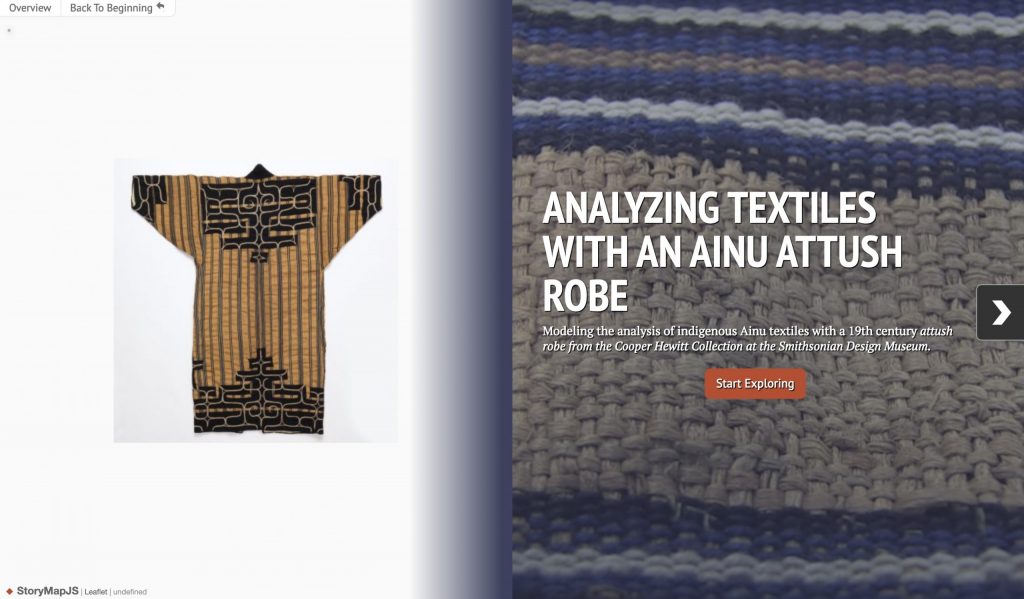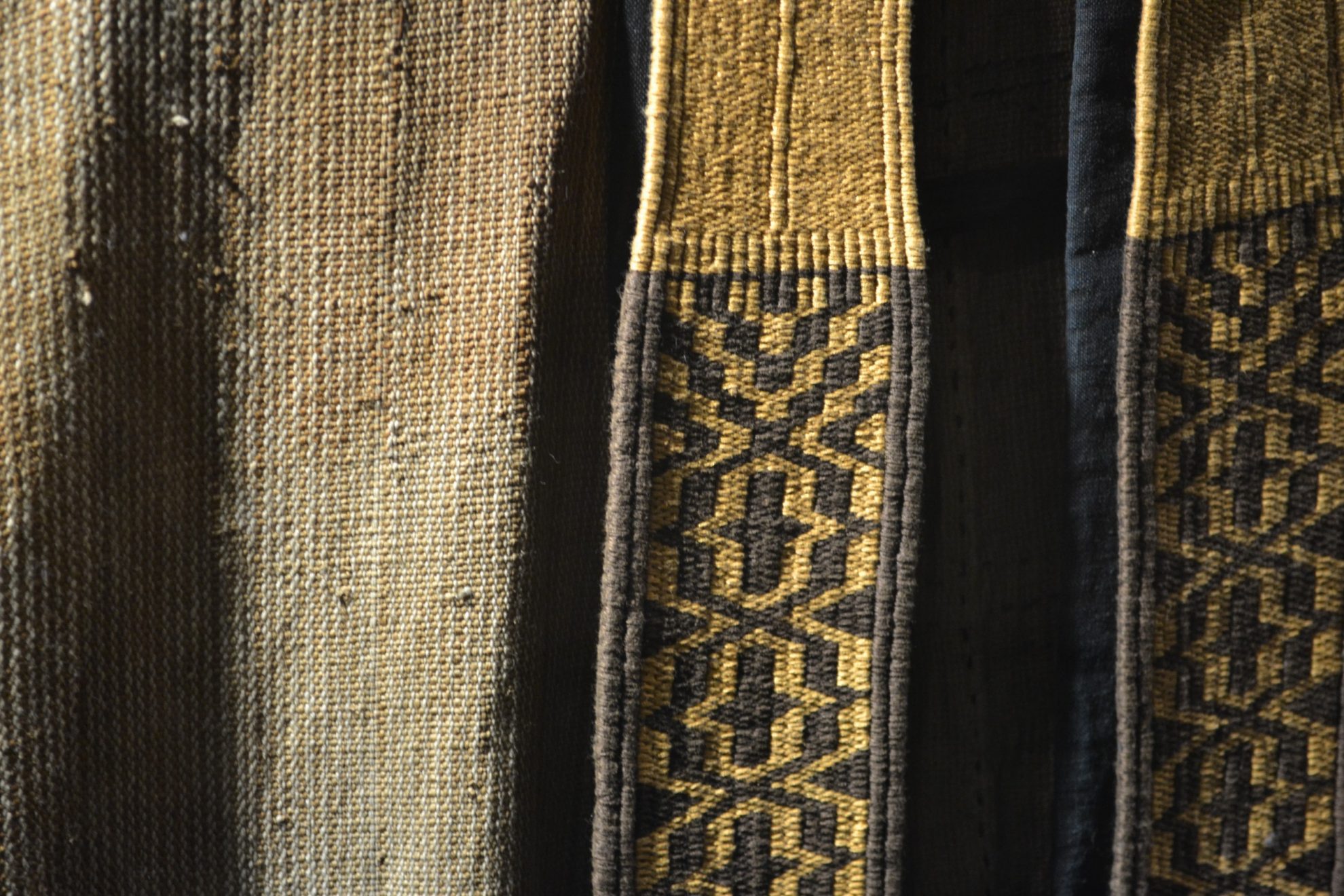
Christina M. Spiker is a Visiting Assistant Professor of Art & Art History at St. Olaf College. She specializes in modern Japanese art and visual culture, with a focus on representations of the indigenous Ainu. With regard to this independent research, she brings her expertise in Japanese culture together with methodology from critical race studies and postcolonial studies to facilitate discussion of minority visual representation in Asia.
Digital Project

Analyzing Textiles with an Ainu Attush Robe
In conjunction with our independent research, I decided to meditate on Ainu textiles. We did a reading by ann-elise lewallen that I found particularly inspiring and this served as the basis for the project. I analyzed an Ainu attush robe currently in the Cooper Hewitt Collection at the Smithsonian Design Museum and created a sample assignment that could be replicated in future courses.
What I learned…
This independent research gave me cause to dive back into readings that are seminal to my field in addition to exploring a couple of new ones. I approached this independent research with an eye to the future, as I would one day like to put together a seminar that explores these issues jointly with students.
I grew the most with respect to the study of Taiwan and China, regions that I know most through teaching. Understanding the origins of China’s ethnic classification system is crucial to understanding how representation operates in that context. To cite Thomas Mullaney’s Coming to Terms with the Nation : Ethnic Classification in Modern China (2011): “Wherever the question of diversity is raised, this same taxonomic orthodoxy is reproduced, forming a carefully monitored orchestra of remarkable reach and consistency: anthropology museums with the requisite fifty-six displays, ‘nationalities doll sets’ with the requisite fifty-six figurines, book series with the requisite fifty-six ‘brief histories’ of each group, Olympic ceremonies with fifty-six delightfully costumed children, and the list goes on. Fifty-six stars, fifty-six flowers, fifty-six minzu, one China” (22). This “orchestra” that Mullaney describes gets at the root of my interests in this field, which is the furthering of race-based ideology and stereotyping through consistent visual reproduction and circulation.
This research helped me better understand my work in a Japanese context versus what is happening in Asia more broadly. While we certainly see some common threads in Japan, Taiwan, and China, there are also specificities unique to their respective context.
Photo credit: Photograph of an Ainu attush robe taken at the Nibutani Ainu Culture Museum by Prof. Spiker in 2011. Made from elm bark.
